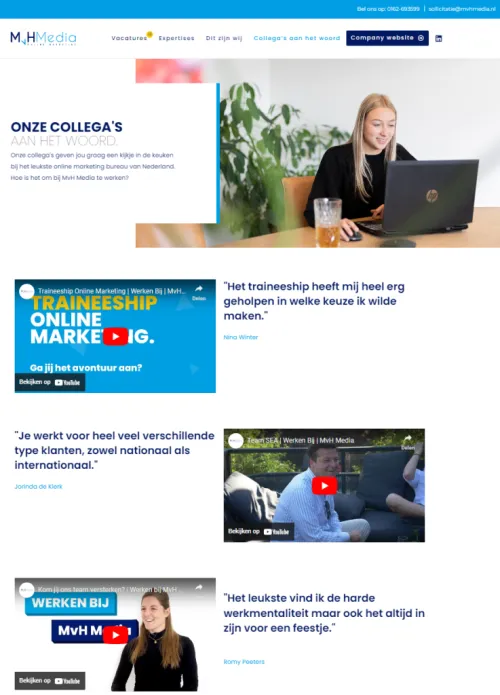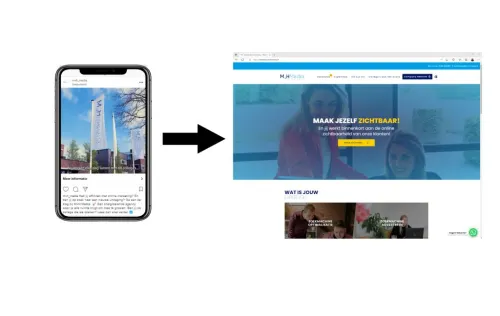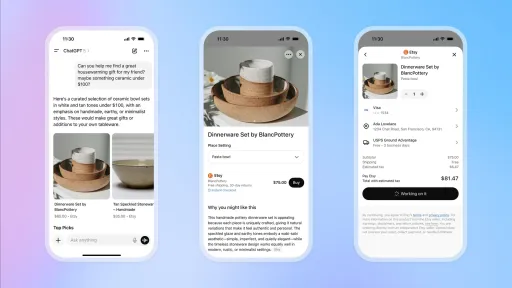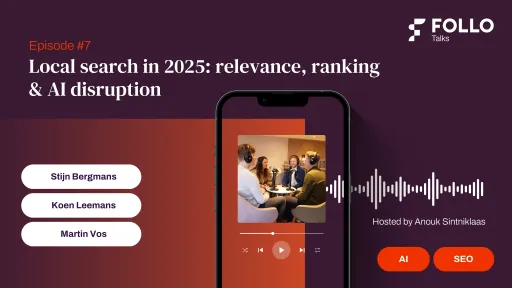Your job listing is live, so let the candidates come pouring in. Right? Unfortunately, it doesn't work that simply. In the current market, you will need to actively search for your candidates. Besides a well-crafted job listing, an effective job campaign is a must. But how do you start, and what does such a campaign look like? Social media is long past being just a platform for entertainment. It's a medium where people want to connect on every aspect of their lives, including finding a new job. In this blog, we will highlight 5 best practices for a successful recruitment campaign on social media!
1. Know Your Audience
First of all, it's important to have a clear understanding of your target audience. Really dive into the person you're looking for. What are the skills and characteristics you're seeking for your job listing, and what kind of person fits this? Make use of your current employees for this. For example, which medium does the target audience use the most? List these characteristics and create a persona. Based on the persona, you can search for the social media platforms that best match. Don't always use all platforms, but choose the ones where your audience is. For instance, LinkedIn is often used by highly educated individuals. Are you looking for young people for internships or traineeships? Then think of TikTok and Snapchat.
2. Employer Branding
Employer branding is a concept you need to know as an employer, and it is becoming increasingly important. Nowadays, the job market is truly a two-way street. While you, as an employer, review all available information about a candidate, this candidate will also have done thorough research on your company beforehand.
Employer branding focuses on showcasing the company culture, work environment, values, and vision of your company. Based on this information, potential employees can get a good idea of what it's like to work at your company and whether it fits their expectations and wishes. You understand that strong employer branding can help your company attract the right candidates and retain your current employees. Furthermore, it also contributes to a positive image of your company.
A best practice within employer branding is using employees as ambassadors. Who better to show what it's like to work at your company than your own employees? Let your employees speak and incorporate this into short testimonials, feed posts, and videos.

3. Content
An important aspect of social media is imagery. To set up a successful recruitment campaign, it's essential to see the content as a direct reflection of your company in every way. Ensure that the imagery aligns with the texts and the values you want to convey with your company. Photos and videos can help capture the attention of candidates and convince them to apply. Examples of good content include a glimpse into daily activities, photos and videos of the team and office, or employee success stories.
When the content in your ad has convinced the candidate to look further, we come to the next important point, namely the landing page. It's important to ensure that the landing page on the website aligns with the visual content within the campaigns. This helps create a consistent image and provide a seamless, coherent experience.

4. Easy Application
The standard request to submit a resume and cover letter is outdated. This doesn't mean it can never be used again, but mainly consider what suits your company and the job listing and think about other ways to connect with potential candidates. Lower the threshold and make the path to contact as easy as possible. Ways to implement this include:
-
- Audio or Video Applications: Allow people to send a short audio or video recording in which they introduce themselves and share more about themselves.
- WhatsApp: By using WhatsApp integration, you can let a candidate contact you directly via the chat function. This way, they can express their interest in the job listing and immediately ask related questions.
- Lead Forms: Instead of directing people to your website to convert them into leads there, you can also use in-platform lead forms. Think of a lead form within Facebook or Instagram, which you can fill out directly upon seeing the ad. You can choose which information needs to be filled in, but keep it simple. The lower the threshold for such a form, the more potential candidates you can reach.
We see that using such a form can lead to much better results in your campaign. Below, you can see that the costs for using a lead form are as much as 88% lower than a lead converted on the website.

5. Test, Measure, Adjust, Repeat
Perhaps obvious, but certainly not unimportant! After you finally have your campaign strategy in place, you've determined which channels to use, the content is created, and your campaigns are set up, it doesn't stop there. Now it's time to test different elements in your campaign. Does that photo or video work for your campaign? A short versus a longer text? These things can make a big difference in cost per result, so keep testing and adjusting continuously. In the example below, you can see how adding a video ad results in the cost per lead being about 69% lower than with the image ad.

As you can see, there's more to a successful recruitment campaign than just posting a job listing online. The above best practices help you get started with your recruitment campaign. Do you want more tips or need help setting up your recruitment campaign on social media? Feel free to contact us!




